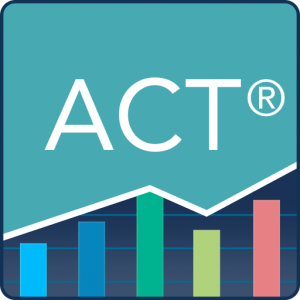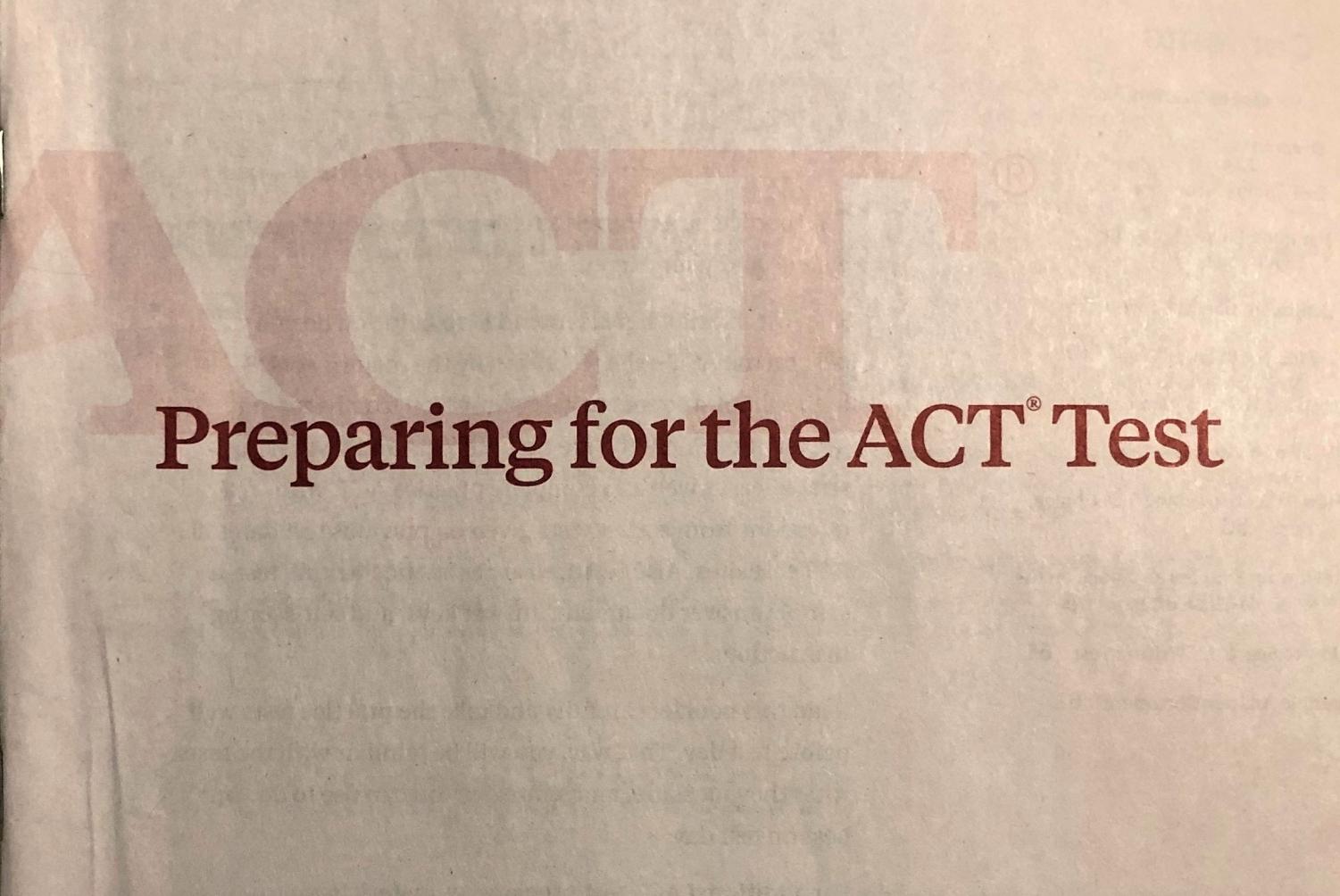What I Wish I Knew: ACT Tips
Studying for the ACT can seem daunting with all the different material out there. Read about different tips for each subject, websites with helpful practice links and overall test taking tips from a Liberty High senior to help ease the process.
September 9, 2019
As an underclassman or junior, preparing to take the ACT is crucial if going to college is the next step after high school. The ACT score affects acceptance into colleges, scholarships, and even what classes one is able to take or test out of. The ACT is a four subject exam, which includes reading, math, english, and science. It normally takes around four hours to complete which can become very mentally draining. Here are some general and specific tips for each section to help ease the exam process.
READING
With a time limit of 35 minutes, the test contains a total of four readings and 40 questions. The passages start easy and end hard. Because reading is the very first section that is tested on, the brain is fresh and not worn out yet. In order to take advantage of a fresh mind, start with the last passage and progress backwards. This way it will get easier to comprehend the passages as your brain starts to lose momentum and focus.
Also, reading the entirety of the passage is crucial. While most of the answers can be found by skimming the text, there are some answers that require knowledge from reading the piece of text as a whole in order to predict and create certain assumptions. As always, practicing this is key before actually going and taking the test. Using online resources and free tests will help put these tips into action and will help adapt the test to your own learning style.
MATH
Knowing and memorizing certain formulas can help increase the math score a lot. Because the math section is made up of 60 multiple choice questions with only 60 minutes, there is only approximately one minute allotted per question. Going into the ACT with these six formulas will help with time management.
Special right triangles and some of the common Pythagorean triples.
a) Recognize 30-60-90 triangles and the correlating sides across from each angle.
b) Instead of having to do the Pythagorean theorem, recognize the first few Pythagorean triples to help cut off time. For example 3-4-5, 6-8-10, 5-12-13 or 8-15-17. There may be a question that requires the use of this knowledge. Without having to use the calculator, it will allow more time for other, harder problems.
Know the area of a trapezoid
Because there tends to be at least one trapezoid problem, knowing this simple formula can grant an extra easy point.
A= ½ (b1 + b2) h
*A= area
*b1 and b2= top and bottom of trapezoid
*h= height
Distance and midpoint formula
Knowing both of these formulas is extremely beneficial as there are most likely going to be a few graph based questions that these are needed to answer.
Distance formula: square root of (X2-X1)^2 + (Y2-Y1)^2
*X2, X1 and Y2, Y1 represent the two coordinate points you’re finding the distance between
Midpoint formula: Find for each coordinate X and Y; for X : (X1+X2)/ 2 ; for Y : (Y1+Y2)/2
Slope of a line
Y2-Y1/ X2- X1
*It is very important to label each (X,Y) coordinate as either your 1st or 2nd coordinate so that you make sure the Xs and Ys that come first (Y2 and X2) are from the same coordinate point.
Slope Intercept Form
Y= mx + b
*m= slope b= y intercept (when x=0)
SOH CAH TOA
SOH CAH TOA is very important to have memorized and to know how to use since it is so prevalent on a lot of the questions throughout the ACT.
-
-
- SOH: Sine= Opposite/ Hypotenuse
- CAH: Cosine= Adjacent/ Hypotenuse
- TOA: Tangent= Opposite/ Adjacent
-
Remember that SOH CAH TOA is an exclusive right triangle property, so this formula can only be used in the case of a right triangle.
Some other important concepts to know are how to solve for variables in systems of equations, understanding what parallel lines allow you to assume in relationship to angles, and knowing how to solve for a variable. It is very beneficial to take a lot of practice tests to figure out strengths and weaknesses per topic. And finally, as a last resort, sometimes you are able to plug in all the answers to see if any of them work. That way is very time consuming though and knowing the formulas before hand is much more efficient.
ENGLISH
There are a total of 75 questions with a 45 minute time frame. While this may seem daunting, this section has a pattern, and once practiced enough, this can really boost a score and help cut time. In the English section, the ACT is looking for the answer that is the shortest, grammatically correct choice. Even though the answer that adds a lot of details may sound better or make the paragraph seem less choppy, that is not what the ACT is looking for.
There should also be anywhere from eighteen to twenty NO CHANGE answers throughout the whole section. Although it may seem awkward or wrong to have a lot of NO CHANGE, that is how the test is set up. To help practice these tips, complete around 3 practice tests, specifically the English section, to help get down time and to expose oneself to what the answers are going to look like.
SCIENCE
The science section is notoriously known as the hardest section timewise. With 40 questions and only 35 minutes to answer them, filling in all the answers in the given time can prove difficult. To help improve the score and time, find full size practice tests specifically for the science section and set aside time to complete at least four of them. Because these tests can be long and draining, take either one or two a week as to not overdo it.
For each test, set a timer and see how much longer it takes from the actual time allotted. For the first few times don’t stress out if its going 10-20 minutes over the 35 minutes. Remember, the science section is a lot of questions in a short amount of time and it takes practice to make it to 35 minutes. Continue this each time until you can get down to the test allotted time.
There are normally around four- six questions based off of a lab report, results, graphs, procedures and research findings. Skim over what the lab report is and get a sense of what the graphs are measuring or showing. Then read over the questions to see what is being asked and what needs to be found. Don’t be afraid to utilize the entire time, even down to the last 30 seconds. While most times one is conditioned to check their work, in the science section it is most likely that one is not going to have enough time to go through the entire thing again.
TEST TIPS
The ACT is long and also tends to be pretty early in the morning. Going to bed early the night before is pretty hard since it’s a different schedule. For a week before taking it, training the body to go to bed earlier each time that week will help when it comes to the actual night before. Because the test is so mentally straining, don’t do any practice problems or tests the night before, most likely last minute studying won’t help anyway, so don’t stress last minute and instead relax.
Also if bigger classrooms and crowds create too much of a distraction and make it harder to test, look for a different testing place that might take place at a school such as Regina, to further improve test scores. Lastly, be confident in what you have studied. If you took the time to study the material and do lots of practice tests, be confident in what you learned. Don’t doubt your abilities and believe in your hard work.
EXTRA STUDY MATERIAL
ACT Practice Tests
This link provides practice quizzes and tests of all levels for each subject matter. Most are short, allowing for a little practice each day if busy with a lot of other activities and classes. After answering a question it will also provide you with automatic feedback and an explanation to learn how to answer it correctly next time.
The different levels allow for anyone to start at wherever they are comfortable and then after continued practice can keep moving up to ensure all content that could appear on the test is known at each level.
https://www.highschooltestprep.com/act/
ACT Prep App

Has practice quizzes, tests and flashcards for each subject. Tracks progress each day along with a daily question if one doesn’t have time to do a full quiz.
It also times the quiz or test so you can see how fast or slow it takes on a certain subject and if improvement is needed. If further help is needed there is a place to connect with tutors in the area and talk to an online representative to get extra help.

